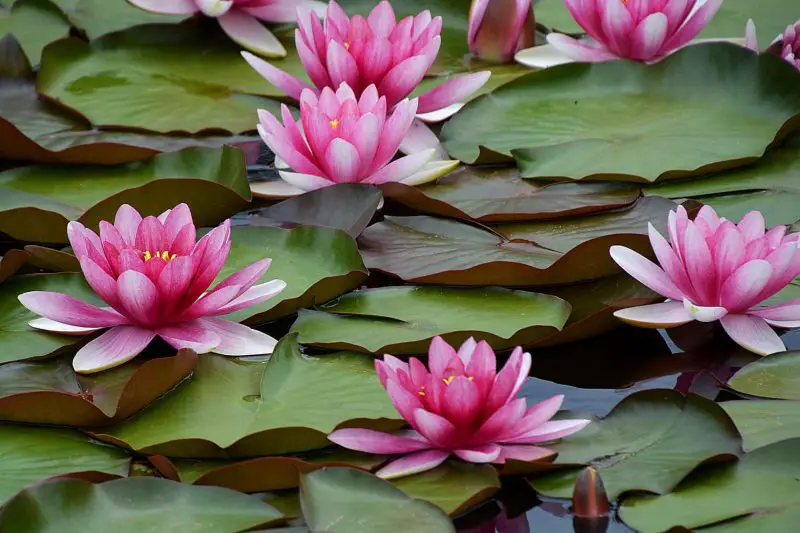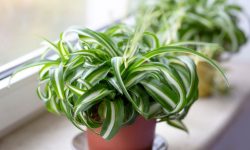Water lilies are more than just flowers—they’re the soul of any pond or water garden. With their floating green leaves and delicate, jewel-toned blooms, water lilies bring a sense of serenity and elegance to every outdoor space. Whether you’re cultivating a peaceful backyard pond or adding a touch of magic to a patio container, these aquatic plants offer beauty that blooms across the seasons.
Growing water lilies might seem intimidating at first, but with the right techniques, even beginners can enjoy their captivating charm. From selecting the perfect variety to placing them at just the right depth, this guide will walk you through everything you need to know. Whether in a small pot or a sprawling pond, water lilies will reward your care with lush, continuous blooms and a vibrant aquatic ecosystem.
Understanding the Appeal of Water Lilies

Water lilies have captivated gardeners and artists for centuries, and it’s easy to see why. Their ethereal beauty seems to rise effortlessly from the water’s surface, offering a tranquil, almost otherworldly display. The graceful way their blooms open with the sun and close in the evening brings a rhythmic, meditative quality to any aquatic space. Their floating leaves create natural reflections on the water, enhancing the visual depth and serenity of your garden.
Beyond aesthetics, water lilies serve several functional purposes in a pond or container garden. Their broad pads shade the water, helping to regulate its temperature and reduce algae growth. This creates a more balanced ecosystem, benefiting fish, amphibians, and other aquatic life. Additionally, their dense foliage provides shelter for koi and goldfish, offering protection from predators and harsh sunlight. Whether you’re a nature lover, a photographer, or simply someone seeking a relaxing outdoor retreat, water lilies add unmatched charm, color, and life to your water garden.
Choosing the Right Type of Water Lily
Selecting the right type of water lily is essential to ensure both beauty and success in your aquatic garden. Water lilies are generally divided into two main categories: hardy and tropical. Each has unique characteristics that make it better suited for different climates, growing conditions, and aesthetic preferences.
Hardy water lilies are the go-to choice for gardeners in temperate or cold climates. These varieties can survive freezing winters by going dormant and reemerging in spring. They typically bloom during the day and come in a range of soft hues like white, pink, yellow, and red. Hardy lilies tend to stay lower in the water and are perfect for small ponds or containers that remain outdoors year-round.
Tropical water lilies, on the other hand, are the showstoppers of the lily world. Known for their exotic colors—such as deep blues and purples—and larger, more dramatic blooms, these varieties flourish in warm climates or controlled environments. Unlike hardy types, tropical lilies can be either day- or night-blooming, which makes them especially intriguing for evening garden enjoyment. However, they need consistently warm temperatures and may require overwintering indoors in colder regions.
When choosing your variety, also consider the size of your container or pond. Dwarf or miniature varieties are ideal for smaller water features and patio pots, while larger ponds can accommodate spreading types with wide leaves and bold flowers. Matching the water lily’s growth habit and hardiness zone to your local conditions ensures a thriving, low-maintenance display that returns year after year with lush blooms and floating greenery.
When and Where to Plant Water Lilies
Water lilies grow best when planted in late spring to early summer, once water temperatures reach at least 70°F (21°C). This ensures they enter their active growth phase without risk of cold damage, especially for tropical varieties. Hardy types can be planted a bit earlier if conditions are stable.
Choose a sunny spot that gets at least 6 hours of direct light each day. Avoid windy areas or places with strong water movement, as calm water helps lilies stay healthy and bloom well. In ponds, place them where the water is still and clear. In containers, choose warm, bright locations like patios or balconies.
Planting depth matters too. Hardy lilies prefer 6–18 inches of water above the pot, while tropical ones thrive in 12–24 inches. With the right timing and location, your water lilies will flourish with vibrant blooms and lush floating foliage.
How to Grow Water Lilies in Pots
Selecting the Right Container
When growing water lilies in pots, choosing the right container is key to their success. Use a wide, shallow container that’s at least 12 inches in diameter and 6 to 10 inches deep. Avoid pots with drainage holes, as these will allow soil to escape and muddy the water. Opt for a sturdy plastic or fabric aquatic planter that can sit securely at the bottom of a pond or water feature. If you’re growing in a patio container or standalone water garden, make sure it’s deep enough to allow proper submersion of the lily’s crown.
Using the Right Soil Mix
Water lilies prefer a dense, loamy soil that holds nutrients without clouding the water. Avoid potting mixes with perlite or peat, as they float and make the water murky. Instead, use aquatic plant soil or a heavy garden topsoil without organic additives. For best results, mix in a slow-release aquatic fertilizer to give the plant a good start. Fill the container about two-thirds full, firm the soil down gently, and leave enough space at the top for gravel.
Planting the Rhizome Correctly
Place the rhizome at a 45-degree angle with the growing tip slightly above the soil level and the cut end pressed gently into the soil. This orientation encourages strong root growth and reduces the risk of rot. Cover the soil surface with a layer of pea gravel or small stones to hold the soil in place and deter fish from digging. Be careful not to cover the growing tip, as it needs access to sunlight.
Positioning the Pot in the Water
Start by placing the pot so that the crown of the water lily is about 6 to 12 inches below the water surface. As the plant grows, you can lower it gradually to 12 to 18 inches deep, depending on the variety. Dwarf varieties need shallower placement, while standard hardy or tropical types can tolerate deeper water. Make sure the pot is stable and won’t tip over, especially if you’re using a water fountain or pond with fish.
Fertilizing and Maintenance Tips
To support continuous blooming, feed your potted water lilies with aquatic plant fertilizer tablets every four to six weeks during the growing season. Insert the tablets into the soil near the roots, being careful not to damage the rhizome. Regularly remove yellow or damaged leaves and faded blooms to encourage healthy new growth. If algae begins to build up, reduce feeding slightly and ensure the pot isn’t overcrowded. Water lilies thrive with six hours or more of full sun each day, so choose a sunny location and rotate the pot occasionally for even growth.
How to Grow Water Lilies in Garden Ponds
Preparing the Planting Area
Before planting, ensure your pond receives at least 5 to 6 hours of direct sunlight daily, as water lilies need ample light to thrive and bloom. Choose a calm area of the pond away from splashing fountains or waterfalls, since turbulent water can stress the plant and inhibit flowering. The ideal water depth for most hardy varieties ranges from 12 to 24 inches, while tropical types may prefer slightly deeper placements.
Clear the bottom of any debris or thick sludge, and if you’re planting directly into the pond bed (without a pot), be sure the soil is heavy and loamy to support the roots. Alternatively, you can use submerged aquatic planters or planting crates to manage growth and prevent spreading.
Planting Water Lilies in the Pond
For pond planting, place the rhizome of the water lily at a slight angle in the soil with the growing tip exposed just above the surface. If you’re using a pot or aquatic basket, fill it with aquatic soil and top it with pea gravel to prevent soil disturbance. Gently lower the container into the pond, starting at a shallower depth (around 6–12 inches of water above the crown), and gradually move it deeper as the plant grows.
Make sure the crown is not submerged too deeply at first, or it may struggle to produce floating leaves. Over time, you can position the container at its final depth—generally between 12 and 24 inches, depending on the species.
Maintaining Healthy Growth
Water lilies require ongoing care throughout the growing season. Remove yellowing or damaged leaves promptly to prevent decay and maintain water quality. Deadheading spent blooms encourages new flowers and keeps the plant tidy. To keep growth vigorous, apply slow-release aquatic fertilizer tablets every 4 to 6 weeks by pushing them into the soil near the base of the plant.
Keep an eye out for pests like aphids or water lily beetles. A strong stream of water or introducing natural predators like fish can help manage infestations. Also, thin out overcrowded lilies every 2 to 3 years by dividing the rhizomes in late spring or early summer.
Seasonal Considerations
Hardy water lilies can remain in the pond year-round in most climates. In cold regions, make sure the rhizome is placed below the freeze line. Tropical varieties, however, should be brought indoors or treated as annuals in zones with freezing winters. In fall, trim back dying foliage and stop fertilizing to allow the plant to go dormant.
By following these steps, you’ll enjoy a vibrant display of floating leaves and colorful blooms from late spring through early fall.
Caring for Water Lilies Throughout the Season
Spring Care
Spring marks the beginning of active growth for water lilies. As water temperatures rise above 50°F (10°C), inspect your pond or pots carefully. Remove any accumulated debris, such as fallen leaves or rotting plant material, that could decay and affect water quality. For established lilies, now is the time to divide overcrowded rhizomes and repot them into fresh aquatic soil. Use wide, shallow containers and position the rhizome with the growing tip exposed. Begin feeding with slow-release aquatic fertilizer tablets once new shoots appear and water consistently stays above 60°F (15°C). Position the pots at a depth where the new leaves can reach the surface easily, gradually lowering them as they grow.
Summer Maintenance
Summer is the prime blooming season for water lilies, and regular care helps them thrive. Remove yellow or damaged leaves frequently to prevent algae buildup and maintain water clarity. Deadhead faded flowers to encourage continuous blooming. Check for common pests such as aphids, spider mites, and water lily beetles. Light infestations can be controlled by spraying leaves with a gentle stream of water, or by introducing natural predators like koi or goldfish that feed on soft-bodied insects.
Fertilize your lilies every four to six weeks during summer with aquatic tablets placed directly into the soil near the rhizome. Avoid using regular garden fertilizer, as it can harm fish and unbalance pond ecosystems. Monitor sunlight levels to ensure your lilies receive at least six hours of direct sun daily, which is essential for vibrant blooms.
Fall Preparation
As the weather cools in early fall, water lilies begin to slow their growth. Stop fertilizing by late September or early October, depending on your climate. Prune away yellowing or dead foliage before it decays and clouds the water. For hardy water lilies, ensure the containers are deep enough so the rhizome remains below the frost line, typically at least 18 inches underwater. If the pot is too shallow, move it to a deeper spot in the pond.
Tropical varieties, which do not tolerate frost, should be removed from the pond before nighttime temperatures drop below 50°F (10°C). Gently lift the rhizome, rinse off soil, and trim back most of the foliage. Store it in moist peat moss or sand inside a plastic bag or container in a cool, dark place with temperatures between 50°F and 60°F (10–15°C).
Winter Dormancy
In regions with mild winters, hardy water lilies can remain in the pond all season, provided the rhizomes are below freezing levels. The plant will enter dormancy, and no active care is needed aside from ensuring that ice does not form solid across the pond’s surface. A floating de-icer or pond aerator can help keep a small opening in the ice for gas exchange, which benefits both lilies and aquatic life.
For tropical lilies stored indoors, check periodically to make sure the storage medium remains slightly moist, not wet. Avoid direct sunlight and freezing temperatures. Do not attempt to grow them actively indoors over winter, as they require warm water and full sun to thrive.
Overwintering Hardy and Tropical Water Lilies
Overwintering hardy and tropical water lilies requires different approaches, as their tolerance to cold varies significantly. Hardy water lilies can survive in outdoor ponds during winter if the rhizomes remain below the freeze line. In colder regions, this means ensuring the pond is at least 18 inches deep. Trim yellowed leaves and flowers in the fall, stop fertilizing, and allow the plant to go dormant naturally. The tubers will rest at the pond’s bottom until spring.
Tropical water lilies, on the other hand, are sensitive to cold and must be brought indoors before temperatures drop below 55°F (13°C). Carefully lift the plant, rinse off excess soil, and trim back foliage. You can either overwinter it as a dormant tuber stored in moist sand or pot it in water and keep it in a warm, sunny location indoors, such as a heated greenhouse or bright windowsill. Regularly check for rot and maintain consistent humidity. Once spring returns and water temperatures rise, both hardy and tropical types can be replanted outdoors to resume growth and blooming.
Propagating Water Lilies for More Blooms
Propagating water lilies is a rewarding way to increase the number of plants in your pond or container while refreshing older, less vigorous specimens. The most reliable and commonly used method is rhizome division, typically done in spring or early summer when the plants are actively growing. To begin, gently lift the lily from the pond or pot and rinse off the soil to expose the rhizome. Using a sharp, clean knife, divide the rhizome into sections, making sure each piece has at least one visible eye (growth bud) and some healthy roots attached. Remove any old or decaying portions to prevent disease, and allow the cut surfaces to air-dry for a few hours before replanting.
Once divided, plant the rhizome sections in aquatic planting containers filled with heavy loam soil or a specialized aquatic mix. Position the growing point just above the soil line, and add a thin layer of gravel to prevent soil from floating away. Place the container back into the water at the appropriate depth for the lily’s type—shallow for dwarf or tropical lilies, deeper for hardy ones. New shoots typically emerge within weeks, followed by fresh blooms if conditions are favorable.
Growing water lilies from seed is also possible, though it’s a slower and more experimental process. Seeds should be collected once the flower has faded and the seed pod has matured. After harvesting, soak the seeds in warm water, changing it daily, and wait for sprouting. Once they’ve produced small roots and leaves, transplant them into pots submerged in shallow water until they are strong enough for deeper placement. Seed-grown lilies may take one to two years to flower, but this method offers an exciting opportunity to cultivate unique or hybrid varieties.
Whether you propagate by division or seed, regular propagation helps maintain plant vigor, encourages continuous blooming, and offers the joy of expanding your water garden naturally and economically.
Common Problems and How to Solve Them
Yellowing Leaves
Yellow leaves are often a sign of nutrient deficiency, poor water quality, or overcrowding in the container. If only the older leaves turn yellow while the new ones remain green, it’s typically part of the plant’s natural cycle. However, if most leaves are yellowing, check your fertilizer routine, planting depth, and spacing. Use aquatic fertilizer tablets monthly and consider dividing or repotting if the plant is too dense.
Poor Blooming
Lack of blooms is usually caused by insufficient sunlight, overly deep planting, or a lack of nutrients. Water lilies need at least 5–6 hours of direct sun daily. Remove shading plants or relocate containers to sunnier spots. Make sure the rhizome is placed about 12–18 inches (30–45 cm) below the water surface for optimal growth.
Pest Problems
Pests such as aphids, water lily beetles, and caterpillars can damage leaves by chewing holes or sucking sap. For light infestations, spray leaves with a strong stream of water or remove affected foliage. In more serious cases, use insecticidal soap safe for aquatic environments or introduce beneficial insects like ladybugs for natural control.
Fungal and Rot Diseases
Fungal infections and rot, particularly rhizome rot, often occur when plants are damaged or over-fertilized. Signs include mushy, foul-smelling rhizomes and blackened leaves. Prevent issues by avoiding excessive fertilizer, keeping the water clean, and removing decaying leaves. If rot is found, remove the plant, wash the rhizome, trim away damaged parts, and replant in fresh soil.
Algae Overgrowth
Algae thrive in nutrient-rich water, often caused by overfeeding fish or excessive fertilization. While not directly harmful to water lilies, algae can block light and hinder plant growth. To control algae naturally, add floating plants for shade, use barley straw to suppress algae growth, and feed fish sparingly.
Benefits of Growing Water Lilies in Pots
Growing water lilies in pots offers a wide range of practical and aesthetic benefits for gardeners of all experience levels. First, it allows for precise control over the soil medium, ensuring that the plants get the low-nutrient, heavy loam they prefer without competition from other aquatic species. This promotes healthier root systems and more vibrant, long-lasting blooms. Potted water lilies are also easier to manage in terms of growth—keeping their spread in check helps maintain a balanced pond ecosystem and prevents them from overtaking other aquatic plants.
Another major benefit is flexibility. By placing containers at various depths or moving them throughout the season, you can optimize sun exposure and temperature conditions for better flowering performance. This adaptability is especially useful in smaller ponds or patio water gardens, where space and light are limited. Pots also simplify routine maintenance such as fertilizing, dividing, and inspecting the plants, reducing the mess and effort involved.
When winter arrives, potted lilies are far easier to protect. Hardy types can be relocated to the deepest, frost-free parts of the pond, while tropical varieties can be lifted and overwintered indoors. Whether you’re growing in a large natural pond or a decorative container on your balcony, using pots provides convenience, control, and beauty all in one approach.
Designing a Pond or Container Garden With Water Lilies
Designing a pond or container garden with water lilies involves balancing beauty, sunlight, and water depth. Choose a sunny spot that receives at least 6 hours of direct sunlight daily, as water lilies need full sun to bloom well. In garden ponds, place lilies in calm, still water away from fountains or waterfalls to avoid disturbing their leaves and flowers. For containers, use wide, shallow pots without drainage holes and ensure they’re submerged at the right depth—typically 12 to 24 inches for hardy types and slightly shallower for tropical ones.
Combine lilies with other aquatic plants like submerged oxygenators or marginal species to create visual layers and support a healthy aquatic environment. Avoid overcrowding; one lily per square meter of surface area ensures ample room for growth and proper airflow. Whether in a pond or pot, thoughtful design will highlight the natural elegance of water lilies while promoting long-term health and vibrant blooms.
Supporting Aquatic Wildlife
Water lilies do more than just beautify ponds and container gardens—they create a thriving habitat that supports a wide range of aquatic wildlife. Their floating leaves offer critical shade, helping to keep water temperatures cooler in summer and reducing excess sunlight that fuels algae blooms. This creates a healthier environment for fish such as koi and goldfish, which often use the shady areas to escape heat and predators.
Beneath the surface, the root systems of water lilies provide shelter and nesting spots for amphibians like frogs and newts, as well as invertebrates such as snails, dragonfly nymphs, and aquatic beetles. The flowers themselves act as nectar sources for pollinators like bees and butterflies, increasing biodiversity around the pond. Birds are also drawn to the abundant insect life supported by the lilies, completing a rich and interconnected ecosystem. By cultivating water lilies, gardeners contribute to the health and balance of local wildlife populations, making each pond or container a sanctuary for nature.
Seasonal Checklist for Healthy Water Lilies
Keeping water lilies healthy year-round requires seasonal attention to their changing needs. Here’s a practical checklist to guide care throughout the year:
Spring:
As temperatures rise and pond water warms to around 10°C (50°F), begin inspecting your water lilies for new growth. Remove any dead leaves or debris from the water to prevent rot. Repot or divide lilies if they’ve become overcrowded, using fresh aquatic soil and a fertilizer tablet to promote strong regrowth. This is also the best time to introduce new water lily plants to the pond.
Summer:
This is the peak blooming season, so regular maintenance is crucial. Deadhead faded flowers and remove yellowing leaves weekly to encourage continuous blooms and maintain water quality. Feed the plants monthly with aquatic plant fertilizer. Ensure leaves are not completely covering the pond surface—aim for 60–70% coverage to allow sunlight and oxygen exchange. Keep an eye out for pests like aphids or beetles.
Fall:
As temperatures cool, water lilies will begin to go dormant. Stop fertilizing and gradually trim back declining leaves and flowers. Hardy water lilies can be left in the pond, provided they are below the frost line. For tropical varieties, prepare to move them indoors or into a greenhouse before the first frost. Reduce watering and light exposure to help them rest through winter.
Winter:
Hardy lilies overwinter in ponds as long as the rhizomes remain below freezing depth. Avoid disturbing them and remove any floating debris or ice buildup to maintain clean water. For tropical varieties stored indoors, keep them in a cool, dark place with minimal moisture, or grow them as houseplants in containers with supplemental light and warmth.
By following this seasonal routine, you’ll support vigorous growth and abundant blooms, ensuring your water lilies remain the centerpiece of your aquatic garden year after year.
Frequently Asked Questions About Growing Water Lilies
How deep should I plant water lilies in a pond or container for best growth?
To successfully grow water lilies in containers or backyard ponds, make sure the crown of the plant is submerged 6 to 18 inches below the water surface. For optimal blooming, place hardy varieties deeper and tropical or dwarf types closer to the surface. Proper planting depth ensures vigorous leaf growth and continuous flower production.
Why are my water lily leaves turning yellow and how do I fix it?
Yellow leaves on water lilies often signal a nutrient deficiency, overcrowded roots, or low sunlight levels. Improve plant health by fertilizing with aquatic plant tablets, repotting in larger containers, and placing the container in full sun. Maintaining clear, clean water also prevents leaf decay and supports vibrant foliage.
Can I grow water lilies in pots on balconies or small patios?
Yes, you can grow water lilies in pots on balconies or patios using wide, water-tight containers. Choose compact or dwarf water lily varieties for small-space gardening. These lilies thrive in containers with at least 10 gallons of water and 6 hours of direct sunlight, bringing colorful blooms even to urban gardens.
How do I overwinter tropical water lilies in colder zones?
In USDA zones below 9, tropical water lilies must be overwintered indoors. Lift the tubers before frost, clean them, and store them in moist sand or peat in a cool, dark location around 50–60°F. You can also grow them indoors with strong artificial lighting. Overwintering properly ensures they return strong in the next growing season.
Do water lilies attract mosquitoes or help control them naturally?
Contrary to popular belief, growing water lilies in a pond can actually help reduce mosquito breeding. Their large leaves shade the water surface, making it harder for mosquitoes to lay eggs. Additionally, water lilies attract beneficial predators like dragonflies and frogs that feed on mosquito larvae, keeping your pond balanced and pest-free.
Final Thoughts on Growing Water Lilies
Whether you’re cultivating water lilies in a humble tub or a large garden pond, these aquatic gems provide a magical and meditative experience. With their rich colors, reflective leaves, and graceful form, they transform any space into a tranquil haven. By understanding their needs and providing thoughtful care, you can enjoy lush aquatic beauty that returns season after season.
Water lilies are more than ornamental plants; they are living art, contributing to the balance and charm of your garden. Start small or dive into a full pond project—either way, the rewards will be deeply satisfying and enduring.






